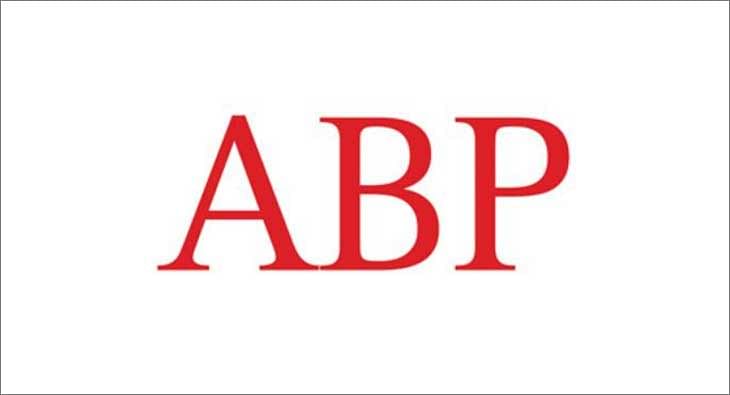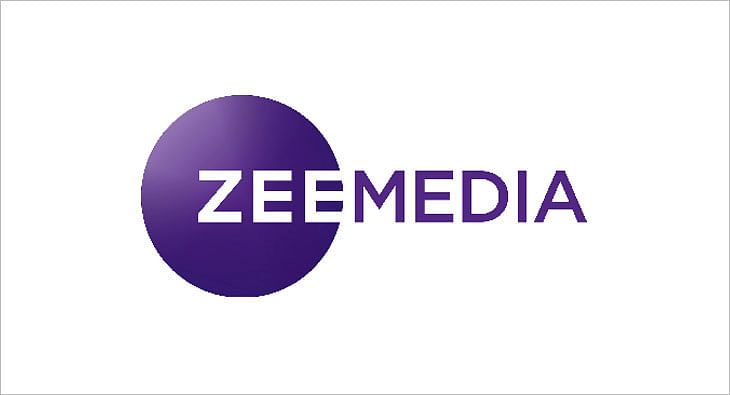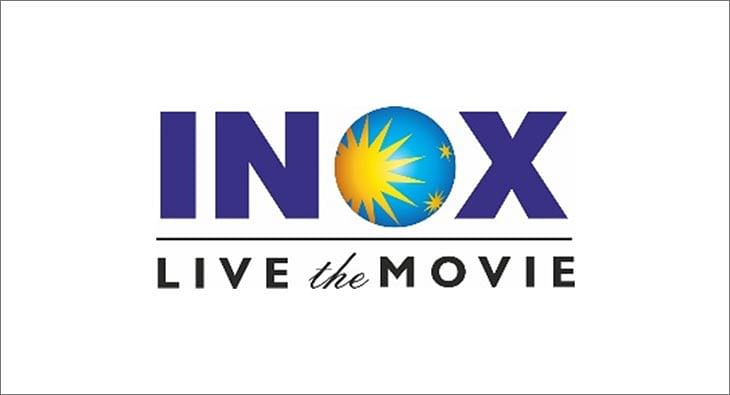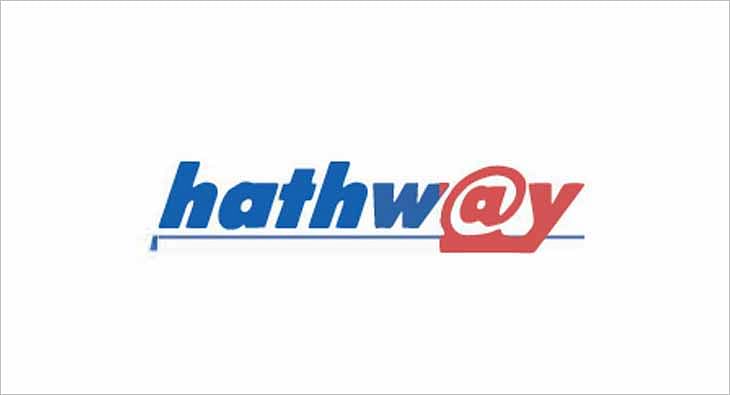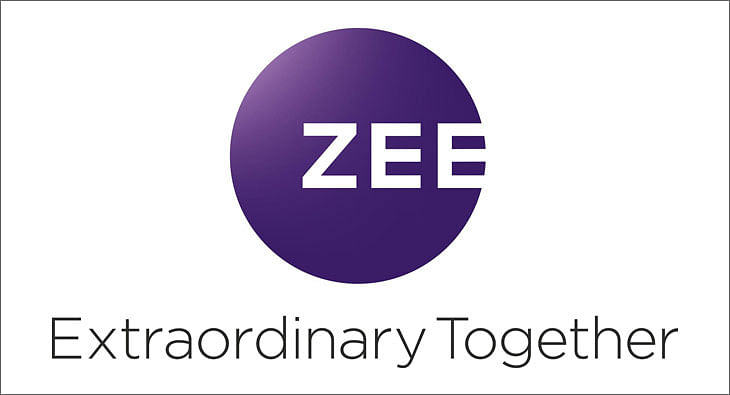Guest ColumnRetrofit: Remembering 26/11, we can do without the crocodile tears
It is over a year now since 26/11 happened and a year later, the news channels haven’t seemed to learn much about giving coverage to such events, observes veteran journalist Sandeep Bamzai. He is confident that as in the past, India will overcome 26/11 as well and will be better and smarter at fighting terror.

Boo! That was my instantaneous reaction after watching Shobhaa De on one of the news telly channels on the first anniversary of 26/11. Why should she be allowed to pontificate and display a panoply of emotions on such a solemn occasion? Who is she? What right does she have to act in such a boorish manner? I will not go to any rock concert, she screeched like a banshee on TV. Next thing I did was blank her out. The power of the remote in my hand did that with ease. It was an outrageous display of indignation. Falsetto yes, but only it was a woman singing. Why do we need these psuedo celebs to tell us what is wrong with our country? Why do these news telly wallahs promote these upper crust snobs? Yes, Shobhaa De is a versatile writer, but whatever she said on telly the other day was far removed from her real life. Why was she so shrill? Simply because it was the Taj and Trident that were attacked and not some local train, which was carrying unsuspecting and hapless hoi polloi to their destination. To Suhel Seth’s credit, at least he made the valid observation that it required the FBI to point us in David Coleman Headley’s direction. Our newly formed National Investigative Agency was clueless about Headley and Rana’s trail in India.
It is over a year now since 26/11 happened. We cannot be grouching against the government and other agencies forever. This was a new style of terror that was unleashed on us. Not since the December 13 attack on Parliament had we seen such a brazen attack on our democracy. The attack was on India, the attempt was to imperil our freedom and the way we live our lives. But let me remind everyone that two of the most audacious attacks in the world have taken place on American soil. On December 7, 1941, Pearl Harbour was attacked by a Japanese fleet, which caught the American defence establishment napping, and then on 9/11, the twin towers of the World Trade Centre were attacked using commercial airplanes. Both times the American democracy was under attack. Both times, there was a gargantuan loss of life and equipment. The scars of Pearl Harbour and 26/11 will never heal. They are deeply embedded in the American psyche. Such was the ferocity of the 26/11 terror attacks that it brutalised the psyche of Indians as well. You cannot forget, and you have to live with it. By making a public spectacle of your emotions, you are making a mockery of those who laid down their lives.
Circumspection is the need of the hour. India cannot go to war with Pakistan, although we very nearly did after the attack on Parliament. A rabid Pakistan is sitting on a nuclear stockpile. The era of conventional wars is probably over. The US has tried to learn from the lessons of 9/11 and this has led to excesses. India, too, in its own way is learning from the tragic events that made up 26/11.
Our biggest problem is how do we track every individual in this vast country. There is no system or process. Indian cities have a large floating population, one can simply disappear here. Till we manage to track people through a unique identity system, there is no real hope. Corruption at all levels doesn’t help, you can pretty much get anything and everything done by bribing people. How Headley was allowed to roam free is what should concern our investigative agencies. Did he plot 26/11 and the whys and wherefores are what we should be seized about. Instead, we have these south Mumbaikars telling us what to do. As it is, there was a sense of revulsion after the news telly coverage of 26/11 last year. The same channels and more or less the same dramatis personae did not exactly cover themselves with glory on the first anniversary. If Facebook saw ferment last year, you should read the invective this time round.
I don’t think intel failed last time round. If one looks at the Ram Pradhan Committee report, then many of these questions are answered. Intel was not paid heed to. That is the unfortunate part. The Ram Pradhan Committee that went into the response by the police to the 26/11 attacks has pointed out “total confusion” in processing of intelligence alerts at the level of the state government and “inadequacies” in the existing mechanism for analysing alerts about possible strikes.
In the panel’s report, which is yet to be made public but has been accessed by various media entities, there are instances of non-adherence to the Standard Operating Practice (SOP) during the terror siege. “It was specifically mentioned (in the intelligence reports) that attacks (were) to take place on three dates that is on August 20, 2006 (alert dated 07-08-2006), May 24, 2008 (alert dated 19-05-2008) and August 11, 2008 (alert dated 09-08-2008) against certain targets, including Taj and Oberoi hotels, which did not happen,” it said. “An overall assessment and proper analysis of these reports would have revealed a strong indication that some major terrorist action was being planned against Mumbai. The existing mechanism to make such an overall assessment was inadequate,” the report said.
What does this tell you? One can argue that our response systems were inadequate. Perhaps our dissemination of intel was poor, but remember that the bravery of our policeman or NSG commandos was of the highest order. An event like 26/11 galvanises governments into devoting more time, energy and attention to weapon systems and response times. Like the Chinese aggression, which forced our planners to provide the best to the defence establishment so that we wouldn’t be caught off guard again. Sadly, an event of the magnitude of 26/11 has taught us many lessons. I guess we need to be prodded into action and activity. But then, media also needs to learn from its mistakes and be more responsible. Is it being more responsible? Is it showing more restraint? Sorry amigos, the answer is negative.
I want to now bring to the notice of the readers a news report that I saw recently on the wires. It tells you of how society is seized of the matter. Chief Justice of India, KG Balakrishnan, speaking at a seminar fulminated against the media. Cautioning media about the ill-effects of unrestrained coverage of terror attacks, the Chief Justice of India said that it could provoke a disproportionate level of anger among people leading to irrational desire for retribution.
Speaking at an International Conference of Jurists on Terrorism in the Capital, he said if terrorist attacks were attributed to individuals belonging to a certain ethnic or religious community, then it may result in unreasonable discrimination and retaliation against ordinary members of that community. “We must take note of the fact that the symbolic impact of terrorist attacks on the minds of ordinary citizens has also been considerably amplified by pervasive media coverage. The proliferation of 24-hour news channels and the digital medium has ensured that quite often some disturbing images and statements reach a wide audience within a short span of time,” he said in his address at the two-day conference, which was inaugurated by President Pratibha Patil.
The CJI said that such a trend was clearly visible in the US in the immediate aftermath of the 9/11 attacks and had been cause of the communal violence in many instances even in India. He said that legal response to terrorism must be founded on a rational understanding of the underlying causes for such extremist behaviour. Knee-jerk responses such as clamping down on civil liberties or a spate of arbitrary arrests and increased surveillance over citizens could prove to be counter-productive, he added.
And all this, after the government issued an advisory to news telly wallahs. Instead, driven and consumed by the ratings war, they continue to pretty much do as they please. The advisory was issued a week in advance and it urged the channels to do balanced reporting while showing programmes on the incident, as the trial related to it is still on. “On the occasion of the first anniversary of the terror attacks in Mumbai on November 26, 2009, it is likely that special programmes, news items, talk shows and interviews would be telecast to highlight the incidents of last year.
“(As) the investigation and trial of the terror attacks in Mumbai are still in progress, it is, therefore, important to ensure a balanced and responsible coverage in any special programme likely to be telecast on the anniversary of the Mumbai attacks,” the advisory, released by Ministry for Information and Broadcasting to all television channels, said. The Ministry said that the media had been asked to exercise restraint as “replays of disturbing visuals, showing scenes of blood and gore or images of dead or seriously wounded, may bring back dreaded memories of the tragic incident and may indirectly fulfil the basic design of the terrorists to spread fear and insecurity in the minds of people”.
The Ministry had urged channels to keep the contents of the advisory in mind “while telecasting programmes in connection with the anniversary of Mumbai terror attacks”. Following the 26/11 attacks, directives were issued to the media by the Ministry on November 27, 2008 and December 3, 2008, regarding coverage of the terror strikes. Television channels were asked to exercise caution while covering the incidents to avoid hampering rescue operations. Appreciating the role of media in building strong public opinion in the face of such threats to national security, the advisory said “it is necessary to continue to display a high degree of maturity and sensitivity while covering events of terror and terror-related issues, especially in the case of Mumbai terror attacks”.
Perhaps the occasion could be used to reiterate India’s commitment to fight terror and our continuing resolve to effectively counter any acts of terror against the country, the advisory added. Blase was the reaction of our news telly wallahs. I thought Star Plus’ attempt at depicting the events of those harrowing 59 hours through the telefilm ‘Un Hazaron Ke Naam’ was much more apt. It recreated the anguish, emotions and helplessness of those macabre hours when war was waged against everything that India symbolises. Let us not make a scene by shedding copious tears, let us understand the complexities of global terror, which we are now very much a part of. We can run, but we cannot hide. Over time our preparedness and responses will improve.
I have lived in Mumbai through the riots of December 1991 and January 1992. I have also lived through the serial bombings of March 12, 1992. I lived in Andheri East those days and worked in Sunday Observer, Tulsiani Chambers. I traveled by the suburban rail like thousands of other commuters and saw the Indian Army conduct flag marches on the streets of south Mumbai. It was scary, but I survived. India will overcome 26/11 as well. It will be better and smarter at fighting terror. So, news telly wallahs spare us the crocodile tears. And lump it you Page 3 wallahs.
(Sandeep Bamzai is a well-known journalist, who started his career as a stringer with The Statesman in Kolkata in 1984. He has held senior editorial positions in some of the biggest media houses in three different cities - Kolkata, Mumbai and New Delhi. In late 2008, he joined three old friends to launch a start-up – Sportzpower Network – which combines his two passions of business and sport. Familiar with all four media – print, television, Internet and radio, Bamzai is the author of three different books on cricket and Kashmir.
(The views expressed here are of the writer’s and not those of the editors and publisher of exchange4media.com.)
Read more news about (internet advertising India, internet advertising, advertising India, digital advertising India, media advertising India)
For more updates, be socially connected with us onInstagram, LinkedIn, Twitter, Facebook Youtube & Whatsapp
You May Also Like
HT Media posts Consolidated Total Revenue of Rs 580 crore in Q2
Chairperson and Editorial Director Shobhana Bhartia says due to lower commodity prices and control on costs there has been an improvement in operating profit
HT Media has posted a Consolidated Total Revenue for Q2, 2020 at Rs 580 crore.
As per a statement released by the company, EBITDA for Q2’20 increased by 139%, and margins at 14% vis-à-vis 6% in previous year. This has been driven by softening of newsprint prices and continued focus on cost.
The Net Cash position at a consolidated level continues to be strong.
The Print ad revenue has declined due to sluggish volumes, even as yields have improved. National advertising continues to be soft, although local advertising witnessed growth.
Savings in raw material costs have driven improvement in EBITDA margins.
Chairperson and Editorial Director Shobhana Bhartia said, “Slowing economic growth has hit advertising spends in key categories, putting pressure on revenues across the media industry. As a result, our Print and Radio (on like to like basis) businesses saw revenues dip as compared to a year-ago. However, thanks to lower commodity prices and a tight control on costs, we saw an improvement in our operating profit. On the digital front, Shine, our online recruitment portal has shown good progress and continues to grow. Our outlook for the coming quarter remains cautious, given overall economic sentiment and macroeconomic trends. Cost-control and falling commodity prices should help protect our margins.”
Read more news about (internet advertising India, internet advertising, advertising India, digital advertising India, media advertising India)
For more updates, be socially connected with us onInstagram, LinkedIn, Twitter, Facebook Youtube & Whatsapp
ABP Group posts Rs 15.70 crore as net profit in Q1 FY20
The group’s total operating income stands at Rs 365.55 crore
ABP Group has posted a net profit of Rs 15.70 crore in the first quarter of FY20, as per media reports.
The group’s total operating income stands at Rs 365.55 crore.
It’s net profit for the fiscal ended March 31, 2019, was down 68% to Rs 31.90 crore compared to the previous fiscal.
The Profit Before Interest Lease Depreciation and Tax (PBILDT) has also dropped 53.52% to Rs 107.12 crore.
The group has six news channels - ABP News (Hindi), ABP Ananda (Bengali) ABP Majha (Marathi) and ABP Asmita (Gujarati), ABP Sanjha (Punjabi) and ABP Ganga (Hindi).
Read more news about (internet advertising India, internet advertising, advertising India, digital advertising India, media advertising India)
For more updates, be socially connected with us onInstagram, LinkedIn, Twitter, Facebook Youtube & Whatsapp
Zee Media posts consolidated revenue of Rs 137.03 crore for Q2 FY20
ZMCL has recorded 4.4% growth in operating revenue for first half of FY20
Zee Media Corporation Ltd (ZMCL) has posted a 4.4 per cent growth in operating revenue to Rs 337.6 crore in the first half of FY20, as per media reports.
It has reported a consolidated revenue of Rs 137.03 crore for Q2 FY20.
In a statement, ZMCL has said: “During the quarter, the network expanded its footprint s into Southern India through the launch of Zee Hindustan in Tamil and Telugu languages. This is intended to make the network's content accessible to wider audience.”
The operating expenditure in Q2FY20 has dropped by 21.7 per cent.
The statement further said: “EBITDA for HlFY20 improved by 34.1 per cent to Rs 1,029 million from Rs 767.5 million EBITDA for H1FY19, while the same declined by 9.4 per cent to Rs 370.2 million from Rs 408.7 million for the corresponding period last financial year. EBITDA Margin grew from 23.7 per cent in H1FY19 to 30.5 per cent in HlFY20, while growing from 24.2 per cent in Q2FY19 to 27 per cent in Q2FY20.”
Read more news about (internet advertising India, internet advertising, advertising India, digital advertising India, media advertising India)
For more updates, be socially connected with us onInstagram, LinkedIn, Twitter, Facebook Youtube & Whatsapp
No slowdown here: In-cinema ad rates up by at least 50% for 3 big Diwali releases
Housefull 4, Made In China and Saand Ki Aankh ready to hit the silver screen this week, with the hopes of giving brands the eyeballs they look for in theatres
It’s that time of the year again when theatres gear up to pocket maximum gains. Diwali is here and there are three films ready to hit the silver screen this week--Housefull 4, Made In China and Saand Ki Aankh. The festive period brings much joy to exhibitors, distributors and theatre owners because it ensures footfalls, giving brands the eyeballs they look for. In fact, industry experts don’t feel that economic slowdown this year has impacted in-cinema advertising. While they are concerned about three movies clashing during Diwali, they predict 50-100 per cent rise in ad rates during this period.
Advertising moolah
Mohan Umrotkar, CEO, Carnival Cinemas, is expecting 60-70 per cent surge in advertisement topline compared to last year. “Going by the buzz and advance booking for these three releases, market is bullish. Advertisers have blocked most of the advt-slots during the festival period. Housefull 4, Made In China and Saand Ki Aankh all combined together should generate around Rs 350 crore topline at the box office during the festival week. We are expecting 60-70 per cent surge in the advertisement topline from last year. Also, this year we have added around 14 per cent new advertisers, and 4 per cent of them are first-time cinema advertisers,” he says.
But according to Siddharth Bhardwaj, Chief Marketing Officer - Head of Enterprise Sales, UFO Moviez, things have changed a lot in the last couple of years. “Since some films have not really lived up to their expectation, advertisers are spreading the spends all through the year. They are picking up far more number of titles in the year rather than focusing only on Diwali or Eid.”
“It is good for the industry because you can monetise the inventories beyond just big weeks. A lot of content- driven films have come up which has given us the opportunity to monetise more markets. It has put lesser pressure on Diwali. Most of the cinemas are sold out for Diwali. It becomes difficult to accommodate everything,” Bharadwaj opines. He also reveals that for this week, the inventories are already full.
Diwali ad rates
Experts reveal that ad rates differ from property to property and depends on location as well. But Diwali surely sees a massive hike in rates. This year, theatre owners are expecting 100 per cent rise in ad rates. While Umrotkar revealed that for Diwali, they are charging 100 per cent higher than the regular card rates, Girish Johar, trade analyst and film producer, shared that even the rates for putting up kiosks of brands go up during festivals like Diwali.
“It’s based on property. On a ballpark, ad rates double up. So if you are putting up a kiosk, they charge say Rs 50,000-25,000 for a month. During Diwali, they charge almost double because of the kind of footfalls theatres witness,” Johar revealed.
Economic slowdown? Not for Cinema!
This year, brands have been pulling back their spends on other mediums due to economic slowdown, but cinema seems unaffected. Calling entertainment business recession-proof, Johar explains, “If you see the other side, box office is up by 15-20 per cent. Yes, it is a bit subdued because the brands are in a wait-and- watch scenario. They are increasing their focus around consumption rather than awareness.”
Bharadwaj too seconded it by saying, “These are challenging times but our medium is very efficient. If you see economy has slowed down, but the cinema has grown instead.”
Clash cover
Three movies are clashing this Diwali which means shared screens and box office gains.
“It’s never good for us when two or more big-ticket films release together. If they would have come on different dates, there are chances that more advertisers will take advt. inventory in those weeks separately instead of that one particular week,” shares Umrotkar.
Read more news about (internet advertising India, internet advertising, advertising India, digital advertising India, media advertising India)
For more updates, be socially connected with us onInstagram, LinkedIn, Twitter, Facebook Youtube & Whatsapp
INOX Leisure Ltd sees 42% growth in total revenue
Profit After Tax up 327% to Rs 51 crore
INOX Leisure Ltd (INOX) has reported financials for the second quarter ending September 2019.
Its total revenue has risen to Rs 524 crore with a 42% growth from Rs 369 crore in the corresponding quarter in FY19. Its EBITDA has more than doubled to Rs 107 crore with a 121% growth, while the PAT stood at an impressive Rs 51 crore, up 327% from previous year’s second quarter.
Siddharth Jain, Director, INOX Group, said: “At INOX, setting new benchmarks is now a routine, thanks to our consistently sharp focus on luxury, service and technology and our uncompromised desire to offer our patrons, nothing but the latest and the best! We are delighted with our remarkable consistency on all parameters, and we are sure about maintaining the momentum and focus on innovativeness. Content once again proved that why we term it as the ‘hero’. Thanks to the creators of such spellbinding movies, which keep inviting our guests to our properties, and allowing us to pamper them with our signature hospitality. With the launch of Megaplex, we are delighted to further our endeavor of developing experience-driven cinema destinations of global standards, and we will continue to do so. On behalf of Team INOX, I assure all our stakeholders that we will continue to break barriers and exceed all expectations.”
Read more news about (internet advertising India, internet advertising, advertising India, digital advertising India, media advertising India)
For more updates, be socially connected with us onInstagram, LinkedIn, Twitter, Facebook Youtube & Whatsapp
Hathway Cable & Datacom reports 100% subscription collection efficiency in Q2
The broadband subscriber base has increased from the previous quarter’s 840,000 to 860,000
Hathway Cable and Datacom has reported subscription collection efficiency at 100%, and the broadband subscriber base has increased from previous quarter’s 840,000 to 860,000 in quarter ending September, as per media reports.
It has narrowed its consolidated net loss by 74% and the operating EBITDA has been reported 15% up to Rs 107.5 crore compared to Rs 93.1 crore a quarter ago.
The total income has dropped 2%, while the expenditure is down 6%.
In the financial results, the company has said the FTTH markets are leading growth in customer acquisition.
Read more news about (internet advertising India, internet advertising, advertising India, digital advertising India, media advertising India)
For more updates, be socially connected with us onInstagram, LinkedIn, Twitter, Facebook Youtube & Whatsapp
ZEEL posts 7.4% YoY growth in total revenue for Q2 FY20
ZEEL's domestic advertising revenue has grown 1.4% YoY in Q2FY20
Zee Entertainment Enterprises Limited (ZEEL) has reported a consolidated revenue of Rs 2,122 crore for the second quarter of FY20, recording a growth of 7.4% on YoY basis.
The Earnings Before Interest, Tax, Depreciation and Amortization (EBITDA) was recorded as Rs 692.9 crore with an EBITDA margin of 32.7%. PAT for the quarter was Rs 413.2 crore. The Profit After Tax (PAT) for the quarter was Rs 413.2 million, with a growth of 6.9% YoY.
During the second quarter, ZEEL’s consolidated advertising revenue grew by 1.2% YoY to Rs 1,224.7 crore. The domestic advertising revenues grew by 1.4% YoY to Rs 1169 crore.
ZEEL has posted 26.8% YoY growth in Q2FY20 domestic subscription revenue. ZEEL’s consolidated subscription revenue grew by 19.0% to Rs 723.5 crore during the quarter.
ZEEL’s total expenditure in Q2FY20 stood at Rs 1429.1 crore, higher by 9.9% YoY compared to Q2FY19.
While ZEE5 recorded a peak DAU (Daily Active User) base of 8.9 million in September 2019, ZEE5 users watched an average of 120 minutes of content on the platform in the same month.
During Q2 FY20, the television network had an all-India viewership share of 18.4%.
During the quarter, ZEEL’s international business revenue was Rs 208.2 crore. The advertising and subscription revenues for international business declined by 4.0% YoY and 21.5% YoY, respectively.
Zee Music Company has registered 7.1 billion views on YouTube in Q2.
Punit Goenka, Managing Director and CEO, ZEEL, said, “I am pleased with the performance we have exhibited during the quarter. Our entertainment portfolio continues to grow from strength to strength across all formats and maintained its leading position. Our television network has emerged stronger post the implementation of tariff order on the back of a strong customer connect and brand pull of its channels. ZEE5 continued to gain traction across audience segments and markets, driven by its compelling content library and expanding list of partnerships across the digital eco-system. This strong operating performance allowed us to deliver industry leading growth in both advertising and subscription despite the tough macro-economic environment. Domestic subscription growth of 27% has reaffirmed the value proposition our television network has built over the years. The impact of tariff order has now largely settled down and has brought increased transparency along with improved monetization. Our domestic advertising revenue growth, though significantly lower than historical trend, is higher than the industry growth. We have witnessed an improvement in ad spends through the quarter and we believe that the onset of festive season along with measures taken by the government will help revive the consumption growth.”
Read more news about (internet advertising India, internet advertising, advertising India, digital advertising India, media advertising India)
For more updates, be socially connected with us onInstagram, LinkedIn, Twitter, Facebook Youtube & Whatsapp




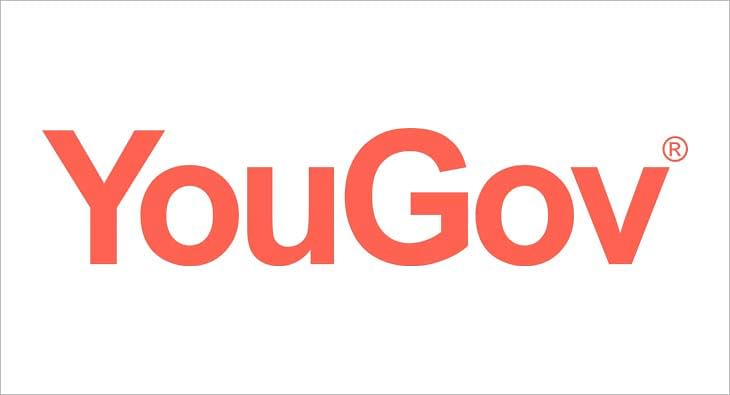
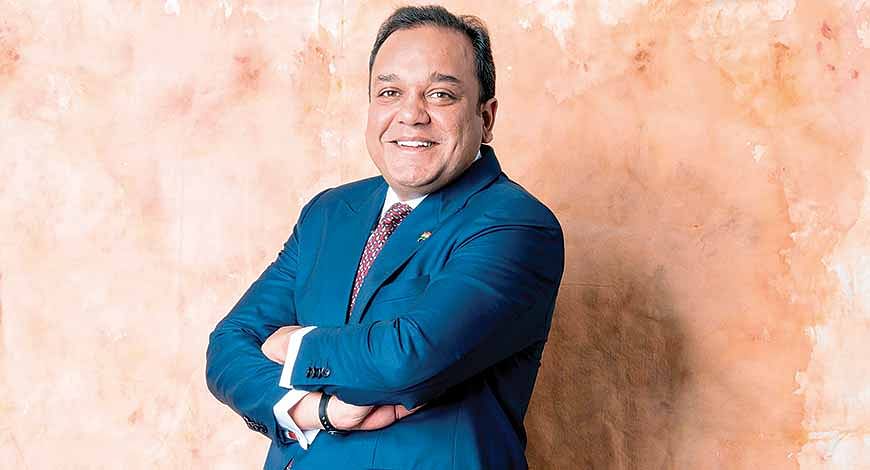








 Share
Share